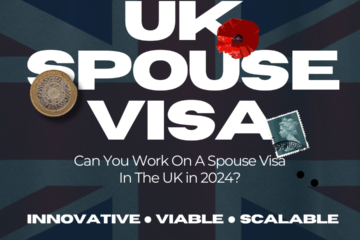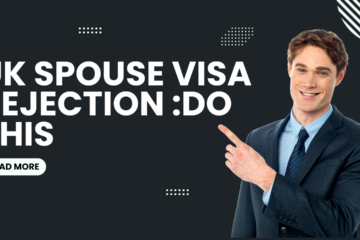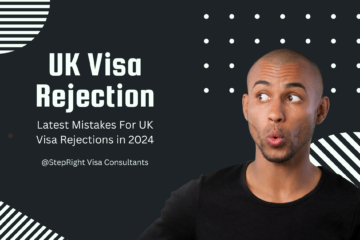USA Tourist Visa 2024 – How to Apply, Documents, Fees from Dubai

| Table of Contents |
|---|
| Introduction |
| 1. Welcome to Our Blog |
| 2. Overview of Obtaining a US Tourist Visa from Dubai |
| 3. What is a USA Visit/Tourist Visa? |
| 4. What is a Nonimmigrant Visa? |
| 5. Eligibility Criteria for a Tourist Visa |
| – Purposes Eligible for a Tourist Visa |
| – Understanding B1/B2 Visa Categories |
| – Advantages/Benefits of Having a US Visa |
| – Explore 50 Countries Visa-Free with a US Visa |
| – Transit Through the UK or Schengen Countries |
| – Cost-Effective Transit via the US to Latin America |
| – US Visas Facilitate Obtaining Other Visas Easily |
| – US Visas: Long-Term Validity for 10 Years |
| Types of Non-immigrant Visas in the USA |
| – Overview of Non-immigrant Visa Types |
| – Requirements for Each Visa Type |
| Requirements for a US Tourist Visa |
| – Necessary Documentation |
| – Financial Requirements |
| – Supporting Documents |
| US Nonimmigrant Visa Application Process |
| – Submit the DS-160 Form |
| – Collect the Documents |
| – Attend the Embassy Interview |
| – Pay the Fee |
| – Await Processing |
| Applying for a US Tourist Visa from Dubai |
| – Step-by-Step Guide to Application Process |
| – Contact Information for Assistance |
| US Nonimmigrant Visa Validity |
| – Understanding Visa Expiration |
| – Consequences of Overstaying a Temporary US Visa |
| – Exceptions to Overstaying Penalties |
| – Waiver of the Three- and Ten-Year Time Bars |
| – Reapplying for a US Visa After Overstaying |
| Step Right Immigration Consultants Success Stories |
| – Why Choose Step Right Immigration Consultants |
| – Success Ratio and Client Testimonials |
Introduction
Are you eager to explore the wonders of the United States but unsure of where to begin with the visa application process? Look no further! Welcome to our blog, where we’ll be delving into the nitty-gritty details of obtaining a US Tourist Visa in 2024, specifically from the bustling city of Dubai. In this comprehensive guide, we’ll not only cover how to apply, the required documents, and associated fees, but we’ll also shine a light on the eligibility criteria, ensuring you’re well-equipped to embark on your American adventure with confidence. So, if you’re ready to unravel the mysteries of USA eligibility and navigate through the essential documents, join us as we embark on this insightful journey together!
What is a USA Visit/Tourist Visa?
A USA Visit Visa is a non-immigrant visa that allows individuals to enter the United States temporarily for tourism, business, medical treatment, or visiting family and friends. This visa is commonly referred to as the B1/B2 visa, where the B1 category is for business purposes, and the B2 category is for tourism and other non-business activities.
What is a Non immigrant Visa?
A non-immigrant visa, as defined by the United States legal system, allows for temporary stays in the country. This entails visiting the US for a brief duration, typically for purposes such as tourism, business, or other temporary activities, with the intention of returning to one’s home country afterward. It’s important to note that non-immigrant visas do not grant permanent residency in the United States. For individuals seeking permanent relocation to live and work in the US, applying for a US Immigrant Visa is necessary.
What Are the Eligibility Criteria for a Tourist Visa?
To qualify for a US Tourist visa, your visit must align with one of the following purposes:
- Holidaying in the United States.
- Exploring various cities across the country.
- Visiting friends or family residing in the US.
- Participating in social events organized by different organizations.
- Seeking medical treatment in the United States.
- Engaging in events or contests related to music or sports without any monetary compensation.
- Enrolling in short-term study courses, such as cooking classes, without earning academic credit.
If your purpose doesn’t fit within these categories, exploring other types of US non-immigrant visas might be necessary to determine your eligibility.
Note:you’ll need to demonstrate sufficient financial resources to cover your stay in the United States and provide evidence of your intention to return to your home country upon the expiration of your visa.
On the contrary, the B1 visa grants entry to the United States for business-related activities, including contract negotiations, attending conferences, and other professional events.

Advantages/Benefits of Having a US Visa
Securing a US visa offers several advantages, including visa-free access to many countries worldwide, ultimately saving you time and money. This privilege allows exploration of remote Caribbean destinations that might otherwise be inaccessible. With the US B1/B2 visa in your passport, you can enjoy these benefits effortlessly.
Many countries that permit visa-free entry with a US visa are often developing nations. These countries lack the infrastructure to screen every traveler extensively, making visa-free access a practical solution for both travelers and governments.
US visas are among the most challenging to obtain due to their strict screening process. This process ensures that applicants have strong ties to their home country, reducing the risk of illegal stays in the US or elsewhere.
Let’s delve deeper into the advantages of the US visa, particularly the benefits associated with the US B1/B2 visa.
1.Explore 50 Countries Visa-Free with a US Visa
Did you know that simply having a valid US B1/B2 visa in your passport grants you visa-free access to approximately 50 countries and territories worldwide? It’s true! This incredible perk significantly expands your travel horizons, particularly if you hold a passport with limited visa-free privileges. Adding a US B1/B2 visa to your passport effectively unlocks access to a diverse range of destinations across the globe.
Among these destinations are some of the most breathtaking countries on Earth. From the vibrant culture of Mexico in North America to the lush landscapes of Costa Rica, Nicaragua, and Panama in Central America, and further down to the captivating beauty of Argentina, Chile, Colombia, and Peru in South America. These countries offer a wealth of experiences just waiting to be explored, making them highly recommended destinations for any avid traveler.
2. Transit Through the UK or Schengen Countries Without a Visa
For travelers holding passports with limited visa-free access, transiting through the UK or Schengen countries often requires obtaining a transit visa, even if you’re not leaving the airport premises and remaining air-side throughout your transit.
However, if you possess a US visa, you’re in luck! Holding a US visa opens doors to transit through the UK or Schengen countries without the need for an additional transit visa. This is undeniably one of the most significant advantages of having a US visa.
Several Schengen countries allow visa-free transit for individuals holding a US visa. Whether you’re transiting through France, Germany, Spain, or even the UK, having a valid US visa streamlines your travel experience by eliminating the hassle of securing yet another visa.
This not only saves you valuable time but also spares you from the financial burden of additional visa fees. By removing the complexities associated with transit visas, traveling with a US visa ensures a smoother and more stress-free journey, allowing you to focus on enjoying your travels to the fullest.
3.Cost-Effective Transit via the US to Latin America or the Caribbean
When traveling from Europe or Asia to destinations in Mexico, South America, or the Caribbean, transiting through the US can often be more economical than opting for direct flights. The abundance of flights departing from the US to these regions on a daily basis results in increased competition among airlines, ultimately leading to lower airfares.
4.US Visas Facilitate Obtaining Other Visas Easily (e.g., Canada, UK)
Travelers often underestimate the significance of their travel history, especially those holding passports with limited visa-free access. Your previous travel experiences and visa records can significantly impact future visa applications, particularly when applying for visas to countries like Canada and the UK.
A US visa holds substantial weight in visa applications due to its stringent screening process and rigorous requirements for approval. Securing a US visa demonstrates that you have undergone thorough scrutiny, possess strong ties to your home country, possess the financial means to travel, and have no intentions of overstaying in the US. Your travel history to the US serves as a testament to your credibility as a genuine traveler.
Visa applications for countries such as the UK and Canada often inquire about your previous travel history, specifically to countries like the US, UK, Canada, or Australia. Holding a US visa bolsters your application by reassuring visa officers of your bona fide intentions and your compliance with immigration laws. It demonstrates your track record as a responsible traveler, further enhancing your chances of visa approval.
In summary, obtaining a US visa not only grants you access to the United States but also serves as a valuable asset in securing visas to other countries, facilitating smoother visa processes, and increasing your credibility as a traveler with genuine intentions.
5.US Visas: Long-Term Validity for 10 Years
One of the most significant advantages of a US visa, particularly the B1/B2 visa, is its lengthy validity period of 10 years. Unlike many visas that offer limited durations, often ranging from specific dates to a maximum of one year, such as Schengen or UK visas, the US visa stands out for its extended validity.
Obtaining longer-duration visas for Schengen or the UK typically requires demonstrating a history of frequent travel to these destinations. However, acquiring a 10-year US B1/B2 visa doesn’t necessitate prior visits to the US. This feature distinguishes the US visa, offering flexibility and convenience to travelers regardless of their previous US travel history.
With a US visa in hand, travelers enjoy the freedom to journey to and from the United States throughout its 10-year validity period. Each entry permits stays of up to 180 days, providing ample opportunities for exploration, business engagements, or visits with family and friends.
How many types of visa are there in the USA?
| Non-immigrant Visa Type | Purpose |
| A Visa | Diplomats or Foreign Government Officials: For individuals representing their government or traveling on official duties. Typically reserved for heads of state or government officials. |
| A-2 Visa | NATO1-6 Visa: Exclusively for foreign military personnel about to serve or be stationed within the United States under NATO agreements. |
| B-1 Visa | Temporary Business Visa: Granted for various business-related activities such as attending conferences, negotiating contracts, or consulting with associates. |
| B-2 Visa | Tourism and Vacation: Intended for individuals visiting the US for reasons like medical treatment, tourism, visiting relatives or friends, or participating in short non-credit courses. |
| BCC Visa | Border Crossing Card: Specifically for Mexican citizens allowing entry into the US. Typically valid for 10 years and requires a valid Mexican passport. |
| C Visa | Transit Visa: For individuals passing through the US en route to another destination, but not stopping for activities beyond transit. |
| CW-1 Visa | CNMI Work Visa: Allows employers from the Commonwealth of the Northern Mariana Islands to employ foreign workers not covered by other visa categories. |
| D Visa | Crew Member Visa: For crew members of sea vessels or international airlines working within the US. |
| E Visas | Treaty Trader (E1) and Treaty Investor (E2) Visas: For individuals involved in trade or investment activities between the US and a treaty country. |
| E-3 Visa | Work Visa for Australian Nationals: Reserved for Australian nationals working in specialized occupations. |
| F and M Visas | Student Visa: For academic (F-1) and vocational (M-1) students pursuing studies in the US. |
| G1-G5 NATO Visas | NATO Visa: Issued to employees of international organizations in the US or those working for NATO. |
| H-1B Visa | Specialty Occupation Visa: For individuals employed in highly specialized fields requiring advanced degrees or extensive training. |
| H-1B1 Visa | Free Trade Agreement Visa: Granted to Chilean and Singaporean nationals based on US Free Trade Agreements allowing temporary work in the US. |
| H-2A Visa | Agricultural Worker Visa: Allows temporary agricultural workers from select countries to work in the US. |
| H-2B Visa | Temporary Non-Agricultural Worker Visa: For temporary seasonal workers not covered by other visa categories, engaging in non-agricultural work. |
| H-3 Visa | Trainee Visa: Provides training opportunities for individuals not seeking academic degrees. |
| I Visa | Media Visa: For representatives of foreign media, including journalists and members of the press, working in the US. |
| J Visa | Exchange Visitor Visa: For participants in exchange programs, including au pairs, scholars, teachers, students, interns, and summer work and travel participants. |
| L Visa | Intracompany Transferee Visa: Allows multinational companies to transfer employees to US offices. |
| O Visa | Extraordinary Ability Visa: Reserved for individuals with extraordinary abilities in arts, sciences, business, education, or athletics. |
| P Visa | Athlete, Entertainer, and Artist Visa: For athletes, entertainers, and artists performing or competing in the US individually or as part of a group. |
| Q Visa | Cultural Exchange Visa: Facilitates cultural exchange programs, including practical training and employment. |
| R Visa | Religious Worker Visa: Allows temporary religious workers to practice within the US. |
| T Visa | Victim of Trafficking Visa: For victims of human trafficking who assist in investigations or prosecutions. |
| TN/TD Visa | NAFTA Work Visa: For Canadian and Mexican citizens working in NAFTA-related professions. |
| V Visa | Family Unity Visa: Enables families awaiting immigration process completion to be temporarily reunited in the US. |
| U Visa | Crime Victim Visa: For victims of certain crimes who assist in investigations or prosecutions. |

Document Requirements for a US Tourist Visa in 2024
To apply for a B2 tourist visa, you will need to provide the following documentation:
| Document | Description |
| Your valid passport | Present a passport that is valid for at least six months beyond your intended period of stay in the US. |
| Proof of sufficient funds to cover expenses during your US stay | Provide evidence demonstrating your ability to financially support yourself throughout your visit to the US. |
| Letters or documents supporting the purpose of your visit to the US | Include letters or documents explaining the reason for your visit to the US, such as invitations from family or friends, or confirmation of a planned event or conference. |
| Adequate insurance coverage for the duration of your stay | Obtain insurance coverage that meets the requirements for your stay in the US, ensuring you are adequately protected against any unforeseen medical expenses. |
| Information regarding your accommodations in the US | Provide details about your accommodations in the US, including the name and address of the person you will be staying with or the hotel where you will be residing. |
| Copies of your air tickets or itinerary showing your travel plans | Submit copies of your air tickets or itinerary outlining your travel plans, including departure and return dates, to demonstrate your intended travel arrangements. |
| Evidence demonstrating your intention to return to your home country after your visit to the US | Present evidence, such as employment documents, property ownership, or family ties, indicating your intention to return to your home country after your visit to the US. |
| Financial documents substantiating your ability to support yourself financially during your stay | Provide additional financial documents, such as bank statements or income tax returns, to support your ability to cover expenses during your US visit. |
| Any additional insurance or supporting documents deemed necessary for your visa application | Include any other insurance policies or supporting documents required for your specific visa application, as requested by the consulate or embassy processing your application. |
US Nonimmigrant Visa Application Process
1.Submit the DS-160 Form:
- To apply for any US nonimmigrant visa, begin by completing the DS-160 form, available on the Consular Electronic Application Center website. This form encompasses various nonimmigrant visa types, including K visas for immigrant purposes.
- Ensure all information entered in the DS-160 form is in English.
2.Collect the Documents:
- Alongside the DS-160 form, prepare necessary supporting documents, which typically include standard requirements for US visas.
- Applicants for F, J, and M visas must also complete an application in the Student and Exchange Visitor Program (SEVIS) and provide their SEVIS ID in the DS-160 form, along with university details.
- Applicants for H-1B, H-2, H-3, CW1, L, O, P, and R visas should complete the DS-160 using information from their I-129 form regarding employment and visit purposes.
- Applicants for E-1 or E-1/E-2 visas additionally require the DS-156E form completed by their employer.
3.Attend the Embassy Interview:
- Upon DS-160 form submission, print the DS-160 barcode page for presentation at the US Embassy.
- Schedule a visa interview appointment at your local US Embassy, where your DS-160 information and interview will inform the consular officer’s decision on your visa application.
4.Pay the Fee:
- Complete the payment of the application fee, determined by visa type and country of origin.
5.Await Processing:
- Following submission and interview, await processing by the Embassy.
- Please refer to the US Visa Department of State for approximate wait times based on the location of the US Embassy where you applied.
Applying for a US Tourist Visa from Dubai
Follow these steps to apply for a US Tourist Visa successfully:
| Step | Action |
| 1 | Determine the type of visa needed for your travel purpose. |
| 2 | Fill out the online visa application form (DS-160) accurately and completely. |
| 3 | Schedule an appointment for biometric data collection (fingerprinting and photograph). |
| 4 | Gather all required documents, including the completed DS-160 form. |
| 5 | Pay the applicable visa fees through the designated payment portal. |
| 6 | Schedule an appointment for your visa interview at the US Embassy or Consulate. |
| 7 | Attend your visa interview on the scheduled date and be prepared to provide supporting documents. |
| 8 | If you meet the eligibility criteria, you will receive your US Tourist Visa following the interview process. |
If you are looking to apply for a USA visit visa, then Step Right Immigration Company can assist you. We have 150+ success client stories. You can contact us at +971 565748958 or +971 542997904 to claim 20%OFF OFFER.
US Nonimmigrant Visa Validity
When you receive your US visa stamped in your passport, it displays an expiration date. However, this date doesn’t signify how long you can stay in the US. Having a visa doesn’t automatically grant entry into the country. The Customs and Border Patrol (CBP) officer at the port-of-entry determines whether you’re allowed to enter and specifies the duration of your stay. The expiration date on your visa only indicates the deadline for using it to enter the US. Upon arrival, you’ll receive Form I-94 from the CBP officer, detailing the permitted duration of stay and the exit date.
Consequences of Overstaying a Temporary US visa
The consequences of overstaying a temporary US visa mirror those of entering the US illegally, subject to US immigration law.If caught, US immigration authorities typically revoke the visa, leading to deportation to the visitor’s home country. Depending on the duration of the overstay, even voluntary departure after overstaying incurs consequences.
Furthermore, individuals who overstay become ineligible to apply for a US visa from any country other than their home country.
The severity of consequences varies based on the length of the overstay and the circumstances of departure (forced deportation or voluntary exit).
Exceptions to Overstaying Penalties
Certain individuals are exempt from the repercussions mentioned above. These exceptions include:
- Travelers under the age of 18
- Travelers with a genuine pending asylum application filed with the United States Citizenship and Immigration Services
- Beneficiaries of the family unity program, pertaining to close relatives of individuals who obtained green cards as farm workers or under the amnesty program of the 1980s
- Individuals with pending applications for adjustment of status (green card), extension of status, or change of status
- Battered spouses or children who entered on a nonimmigrant visa, demonstrating a connection between the abuse and the overstay
- Victims of trafficking, able to provide evidence that trafficking was a significant reason for unlawful presence
- Individuals granted protection under Temporary Protected Status (TPS), Deferred Enforced Departure (DED), Deferred Action, or Withholding of Removal under the Convention against Torture.
Waiver of the Three- and Ten-Year Time Bars
Suppose you’ve overstayed your US visa but can demonstrate that your spouse or parents, who are lawful permanent residents or US citizens, would endure extreme hardship without the requested immigration benefit. In that case, you may be eligible for a time bar waiver.
However, obtaining such a waiver requires substantial evidence showcasing extreme hardship, including financial, emotional, or medical ramifications for your US family members.
Considering the complexity of the process, seeking legal assistance from a qualified attorney is advisable. They can assist in compiling necessary documents and navigating the intricate procedures involved in applying for these waivers.
Reapplying for a US Visa After Overstaying
If you’ve entered the US through the Visa Waiver Program (VWP) with an Electronic System for Travel Authorization (ESTA) and overstayed your authorized period by a few days or weeks, you’ll need to apply for a visa for your next entry. Alongside other required documents, you must demonstrate nonimmigrant intent and strong ties to your home country. Convincing the consular officer is crucial, as any doubts may lead to visa denial.
For international visitors who overstayed their visa (ineligible for ESTA), reapplication for a visa is necessary for reentry. They too must provide compelling evidence to assure the consular officer of their intent to abide by authorized stay limits, and substantiate reasons for their previous overstay.
Step Right Immigration Consultants Success Stories
Why Should You Step Right Immigration & Travel Consultant in Dubai
In the labyrinth of immigration procedures, Step Right Consultants emerges as your guiding beacon, offering a pathway to seamless and triumphant migration to the USA. Here’s why entrusting your aspirations to Step Right Immigration Consultants is a decision worth making:
1.95% Success Ratio: Step Right Consultants boasts an enchanting 95% success ratio in procuring the coveted Work Permit Visa for its clients. This illustrious accomplishment stands as a testament to the service’s unwavering dedication to ushering entrepreneurs into the realm of USA Visa. With a flair for turning aspirations into reality, Step Right Consultants leads the way with unparalleled expertise and finesse.
2.150+ Success Stories: Behind the veil of Step Right Consultants lies a tapestry adorned with over 150+ stories of triumph. Each story is a testament to the service’s prowess in navigating the intricate landscapes of work permit, tourist visa or business migration visas.



0 Comments